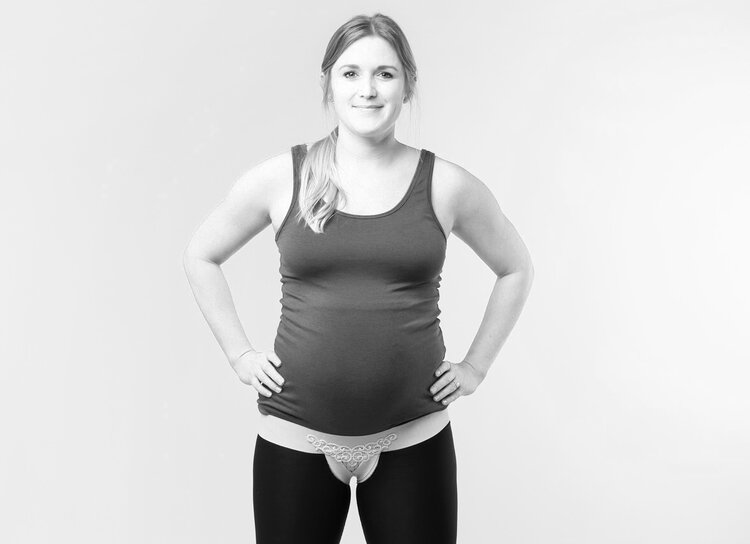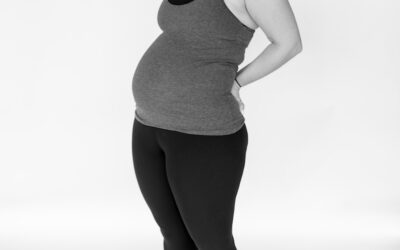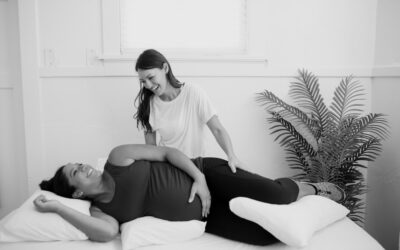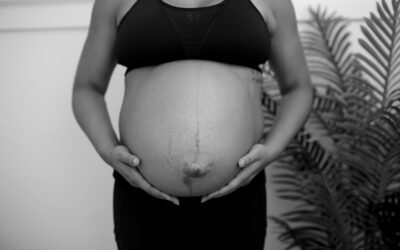Varicose veins are swollen veins that can occur anywhere in the body. They are often the result of increased pressure to an area. Increased pressure on the pelvic floor during pregnancy is common, and can lead to vulvar varicosities, or varicose veins on your vulva.
While they are not always problematic, they can often be painful. Many women often feel self-conscious. Let’s talk about them.
Risk factors for varicosities:
- Age
- Family history
- Pregnancy. Pregnancy causes added strain on the circulatory system, which leads to varicose veins. Once you have vulvar varicosities in one pregnancy, you are more likely to have them the next pregnancy.
What are the symptoms of vulvar varicosities?
Some symptoms of vulvar varicosities include the following:
- Pressure or heaviness in the genitals
- Swelling in and around the genitals
- Vulvar pain or pressure worse with prolonged standing, or sexual and physical activity
Do vulvar varicosities go away?
There is no way to make them go away completely during pregnancy. Yet there are strategies available to reduce the discomfort. You can also work to prevent them from worsening.
Vulvar varicosities go away after you give birth. After birth, around your six-week check up, you’ll notice they’ve dissipated.
Can you get vulvar varicosities while not pregnant?
You can get vulvar varicosities while not pregnant, although this is rare.
How can you help heal vulvar varicosities?
1. Avoid prolonged standing or sitting
These positions put a lot of downward pressure and stress on your pelvis and vulvar tissues. This can make it more difficult for your veins to function. Over time, this can lead to weakening and enlarging of the veins. So, sit down and put your feet up!
2. Wear supportive compression garments
Wear garments that support the vulvar tissues and provide compression. This can reduce the discomfort associated with vulvar varicosities. It can also prevent them from worsening.
Try the Prenatal Cradle, Pelvic Floor Press, and Baobei maternity and postpartum bloomers. Knee-high compression socks can also be beneficial for vulvar varicosities.
3. Elevate your pelvis and legs for a few minutes at the end of each day
Lie on your back with a few pillows or a pelvic wedge under your bottom. This will help reduce swelling and improve circulation. You can include an extra pillow under your right hip so you tilt to your left.
You can also perform kegels in this position. As the blood circulates throughout your body, kegels will help the blood to flow. This will be especially beneficial if you have a job where you are on your feet most of the day.
4. Ice your vagina
An ice pack to your vulvar tissues for a few minutes several times a day can help ease the pain and reduce swelling.
There are several pelvic support garments that have slots for ice packs to make it easier. You can also put a bag of frozen peas in a pillowcase as you lie in the position recommended above.
Leave on for 20 minutes several times a day.
5. Try sleeping on your left side
Sleeping on your side will reduce pressure on the vena cava. This will improve blood flow to the lower extremities and pelvis.
6. Reduce the amount of lifting you do throughout the day
This may mean that you will have to adjust your exercise routine for a while. Or it can mean that you may need to do light duty at work.
Ps. Back pain while pregnant is also common.
7. Exhale on exertion
Good pressure management will result in less stress on your vulvar tissues.
One way to do this is to use a slow, controlled exhale as you lift. This will reduce the pressure in your abdomen, and the negative stress on your vulvar tissues. (Keep this in mind if you are pregnant and have toddlers at home to pick up and carry)
8. Get a squatty potty
That’s right! Pooping with the correct form will reduce stress on the pelvic floor and vulvar tissues.
You also want to remember to use a slow, controlled exhale as you void.
9. See a pelvic floor PT
Pelvic floor physical therapists educate patients on how to better manage their pressure. PTs can help with exercises and modifications.
We’ll also screen you for pelvic floor muscle weakness or tightness. Weakness and tightness can make varicosities worse.
When do you need surgery for vulvar varicosities?
There are surgical and medical treatment options available if your vulvar varicosities do not resolve after delivery. These surgical interventions include:
Vein embolization: This is a procedure where a catheter is used to close the weakened vein with a coil.
Sclerotherapy: This is an injection into the vein with a solution that blocks blood flow. The goal of this treatment is to reduce the pain and swelling associated with varicose veins.
These options are not recommended during pregnancy and should only be an option if your varicosities do not resolve on their own.
P.S. Check out our “What to expect from your body postpartum” series! We offer advice for 0-2 weeks postpartum, 2-4 weeks postpartum and 4-8 weeks postpartum.
____________________________________________________________________________________________________
Are you currently pregnant or planning to conceive? Download my FREE resource — How to Prepare Your Pelvic Floor & Core for Childbirth + 8 Must-Dos for C-Section and Vaginal Deliveries.
____________________________________________________________________________________________________
Some links may be affiliate links. The products we recommend are products we use or recommend to clients.




